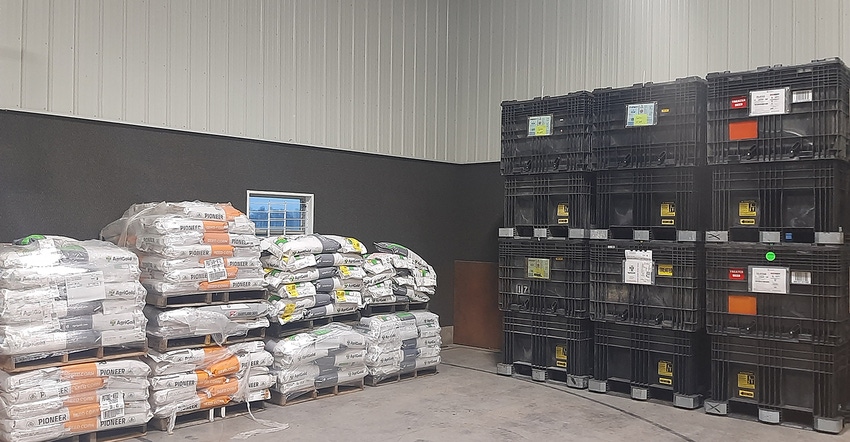March 25, 2022

Spring break was this week, so we took a quick weekend trip to a waterpark hotel. The kids had fun and the adults got worn out!
Since returning to the farm I have been dealing with one thing: replacing seed. All winter, seed has been slow to come in. Our operation has always imposed a delivery deadline of March 15, but we are well past that now, and the shed is pretty much bare.
The original reason for the deadline was simple – we didn’t want to be dealing with unloading seed when it was nice out and time to do fieldwork. Since that time a second and more important reason has developed: March 15th still allows enough time to send off a seed sample and verify quality before planters hit the fields in mid to late April.
Shortly before we left, I learned that one variety we had selected would not meet germination specifications. Then, after we returned home, another variety was knocked off the list. These two varieties accounted for 20% of our soybean acres for this year.
The frustration has been compounded as we are changing traits this year and there is limited yield data available. Most of the varieties are new for 2022, and all are new to us. We are relying heavily on dealer input. I hope they realize that next year’s order will be directly related to the quality of their advice.
Finding the good seed
Is there good soybean seed out there? Absolutely! Some companies have shared with me warm germination reports of untreated seed with results in the high 90s. No doubt after that seed is treated the germination will be even better. That seed will be branded with a 90% germ score on the seed tag (90% is as high as companies print on soybeans tags). But I’m also hearing there is going to be a lot of seed that gets an 85% germ score; there may even be some at 80%!
With the cost to plant an acre of soybeans as high as it is, I’m not going to plant 5-10% of seeds that aren’t even viable from the start. We could dive into spacing and emergence, but that is a whole different topic.
Dad talked to the seed lab we send samples to. He was told the lab has been overrun with samples sent by farmers. The lab is running way behind. Farmers know there are more issues this year than normal and want to check seed quality. One of my seed suppliers told me the same thing – their samples are slow coming back because of the amount of farmer samples supplied to the lab they use (different lab). The company doesn’t want to ship seed until the final results are in, so delivery has been delayed.
The opinions of the author are not necessarily those of Farm Futures or Farm Progress.
About the Author(s)
You May Also Like






